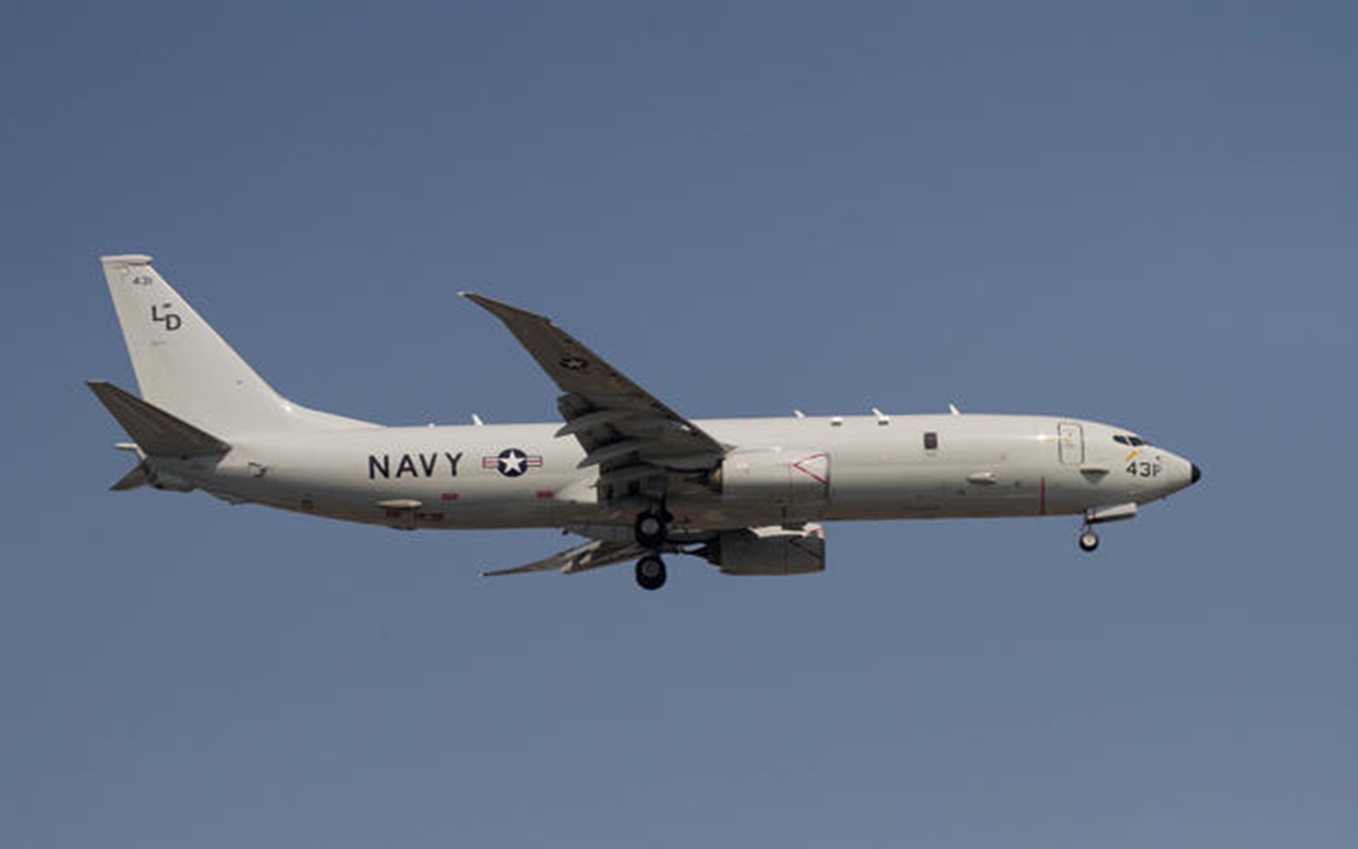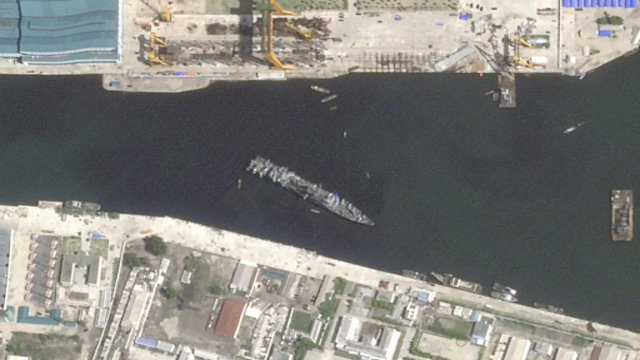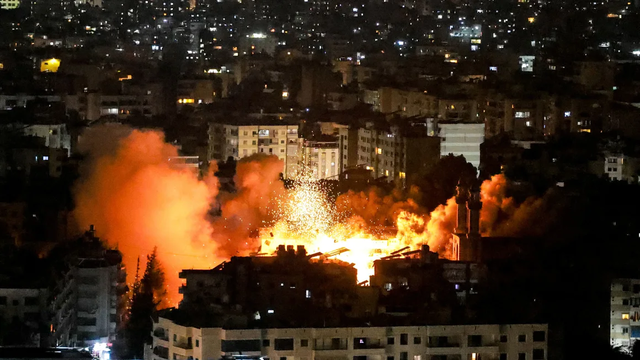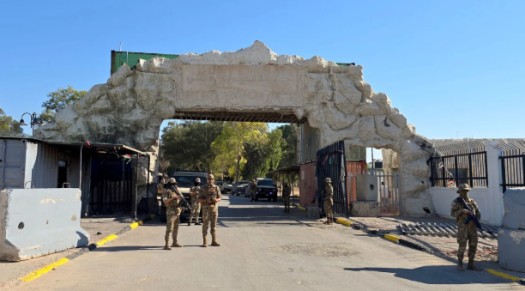
A multipurpose maritime aircraft from the U.S. Navy Patrol Squadron 10, known as the "Red Lancers," identified as a Boeing P-8A Poseidon, is observed in flight in proximity to the Naval Air Facility located in Kanagawa. The photograph was captured by Damon Coulter and is available through SOPA Images/Light Rocket via Getty Images.
In a recent development, the Chinese military reported that its aircraft closely trailed a U.S. Navy surveillance plane flying across the Taiwan Strait, a contentious water passage separating mainland China and Taiwan. This region, part of the South China Sea, has become a focal point for disagreements, with China asserting jurisdiction over the strait while the U.S. considers it international territory.
Senior Colonel Shi Yi, spokesperson for the People's Liberation Army, criticized the U.S. Navy's decision to fly over the Taiwan Strait, denouncing it as a "provocative move" in a statement released on Wednesday. The spokesperson emphasized that the Chinese PLA Eastern Theater Command had deployed aircraft to monitor the U.S. plane, adhering to established laws and regulations. They underlined the command's commitment to maintaining high alertness to protect China's sovereignty, security, and regional peace and stability.
The U.S. Navy aircraft in question was a P-8A Poseidon spy jet, designed by Boeing for maritime surveillance, search and rescue, and anti-submarine warfare. This military adaptation of Boeing's 737 passenger jet recently gained international attention due to an incident where it overshot a runway in Hawaii and remained stuck in a bay for several weeks.
U.S. Navy officials confirmed the plane's transit over the Taiwan Strait, asserting that it operated within international airspace and upheld the navigational rights of all nations. The U.S. 7th Fleet, stationed in Japan, stated that this move demonstrated the United States' commitment to a free and open Indo-Pacific, reiterating its adherence to international law in flying, sailing, and operating in permissible areas.
Incidents of Chinese fighter planes shadowing or intercepting U.S. military aircraft and vessels in the region are not uncommon. In December of the previous year, a Chinese fighter jet came dangerously close to a U.S. Air Force jet over the South China Sea, forcing evasive action. Similarly, in June, China's defense minister defended the decision to sail a warship in front of an American destroyer and a Canadian frigate in the Taiwan Strait, considering freedom of navigation patrols as provocations.
The Pentagon, in October, declassified images and videos illustrating multiple instances of Chinese jets engaging in "coercive and risky" maneuvers near U.S. jets in the Indo-Pacific region. These actions were characterized as part of a broader campaign by China to influence U.S. operations in the area.
The recent encounter over the Taiwan Strait underscores the ongoing tensions in the region and the differing perspectives on territorial claims. As these incidents persist, they contribute to the complex dynamics shaping geopolitical relations in the Indo-Pacific.
In a recent development, the Chinese military reported that its aircraft closely trailed a U.S. Navy surveillance plane flying across the Taiwan Strait, a contentious water passage separating mainland China and Taiwan. This region, part of the South China Sea, has become a focal point for disagreements, with China asserting jurisdiction over the strait while the U.S. considers it international territory.
Senior Colonel Shi Yi, spokesperson for the People's Liberation Army, criticized the U.S. Navy's decision to fly over the Taiwan Strait, denouncing it as a "provocative move" in a statement released on Wednesday. The spokesperson emphasized that the Chinese PLA Eastern Theater Command had deployed aircraft to monitor the U.S. plane, adhering to established laws and regulations. They underlined the command's commitment to maintaining high alertness to protect China's sovereignty, security, and regional peace and stability.
The U.S. Navy aircraft in question was a P-8A Poseidon spy jet, designed by Boeing for maritime surveillance, search and rescue, and anti-submarine warfare. This military adaptation of Boeing's 737 passenger jet recently gained international attention due to an incident where it overshot a runway in Hawaii and remained stuck in a bay for several weeks.
U.S. Navy officials confirmed the plane's transit over the Taiwan Strait, asserting that it operated within international airspace and upheld the navigational rights of all nations. The U.S. 7th Fleet, stationed in Japan, stated that this move demonstrated the United States' commitment to a free and open Indo-Pacific, reiterating its adherence to international law in flying, sailing, and operating in permissible areas.
Incidents of Chinese fighter planes shadowing or intercepting U.S. military aircraft and vessels in the region are not uncommon. In December of the previous year, a Chinese fighter jet came dangerously close to a U.S. Air Force jet over the South China Sea, forcing evasive action. Similarly, in June, China's defense minister defended the decision to sail a warship in front of an American destroyer and a Canadian frigate in the Taiwan Strait, considering freedom of navigation patrols as provocations.
The Pentagon, in October, declassified images and videos illustrating multiple instances of Chinese jets engaging in "coercive and risky" maneuvers near U.S. jets in the Indo-Pacific region. These actions were characterized as part of a broader campaign by China to influence U.S. operations in the area.
The recent encounter over the Taiwan Strait underscores the ongoing tensions in the region and the differing perspectives on territorial claims. As these incidents persist, they contribute to the complex dynamics shaping geopolitical relations in the Indo-Pacific.















